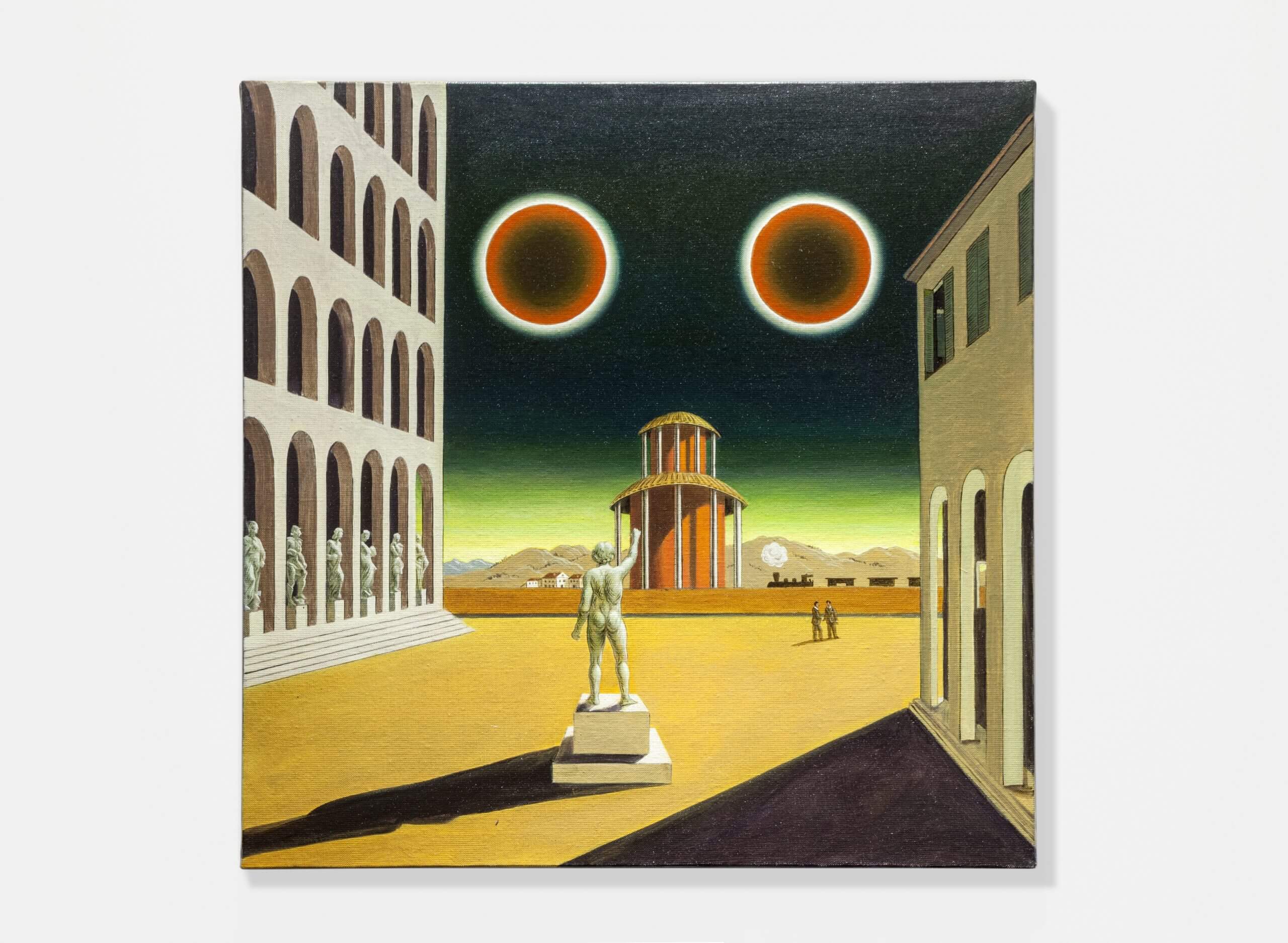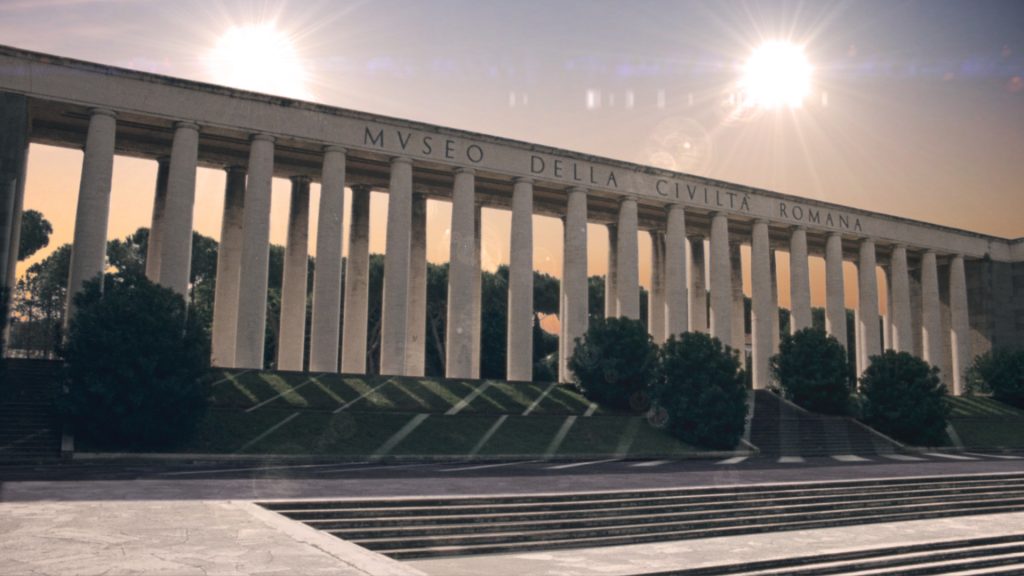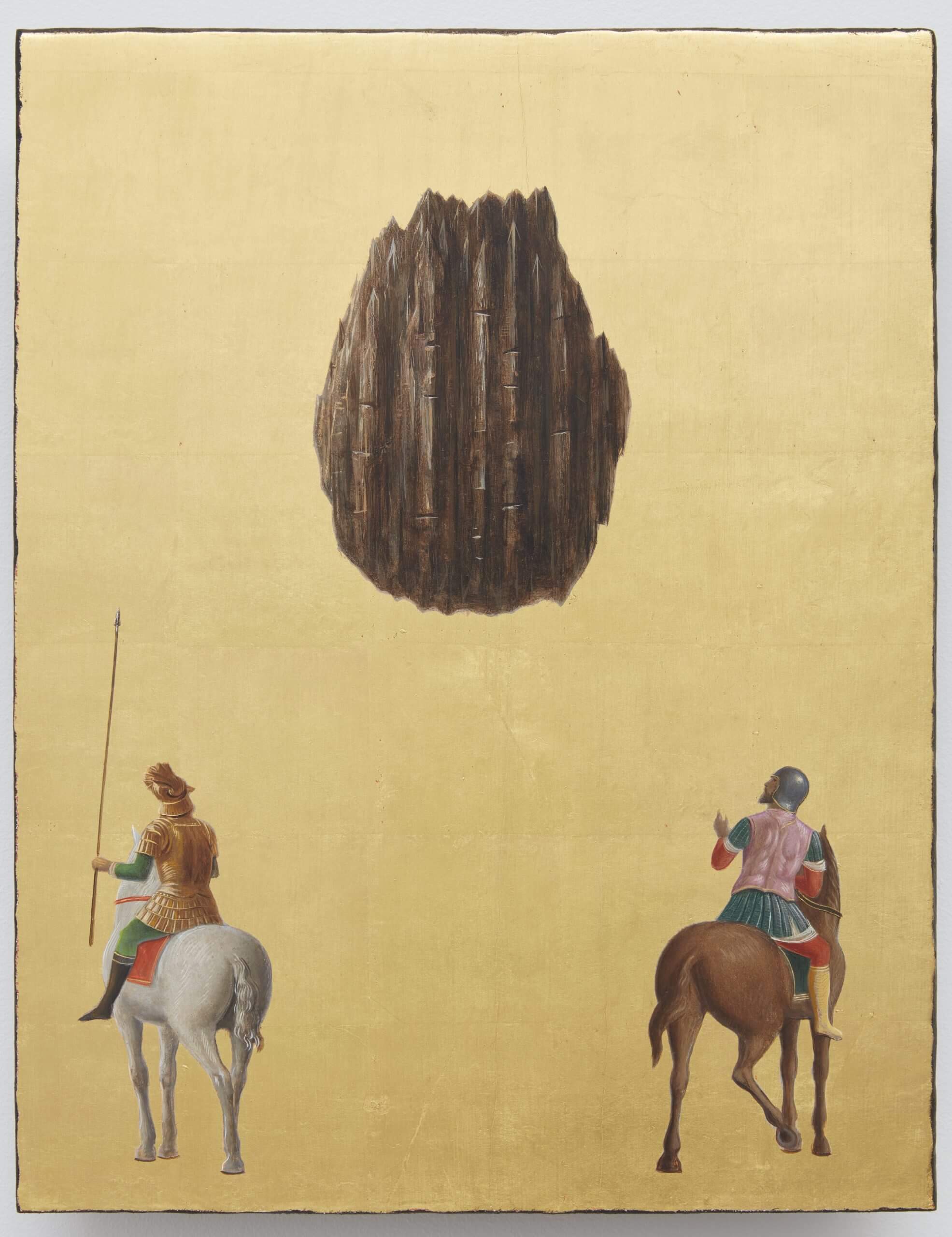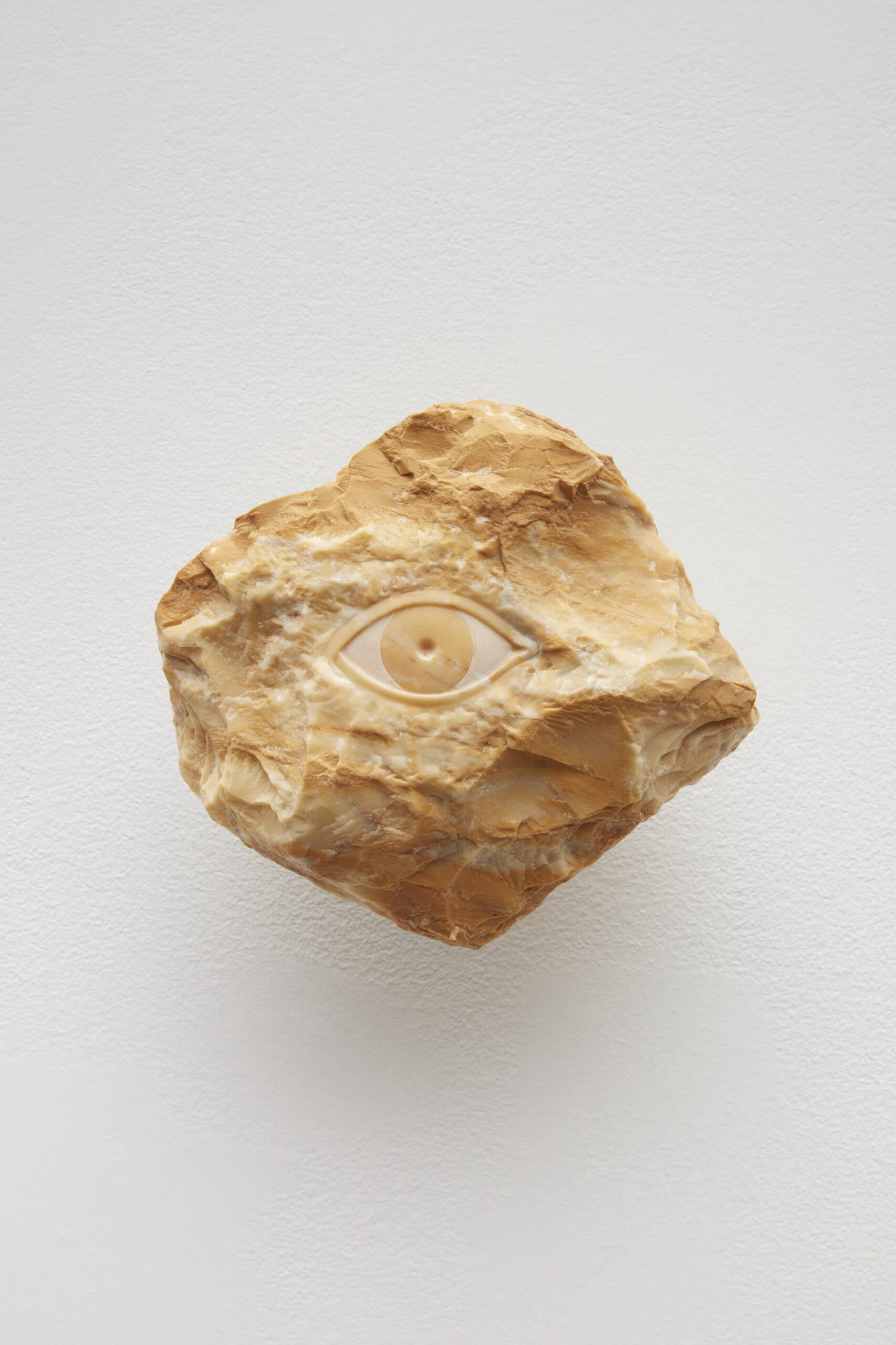Piercing the Supernatural with Laurent Grasso

Piercing the supernatural, or the sphere of unexplained phenomena, in visual art is inherently fraught with risk. An artist, a filmmaker, or any storyteller could easily stray into the conspiratorial realm, stained with warped opinions or intellectual hysteria. Laurent Grasso transcends these errors in a subtle, beautiful fashion, as his work tests the boundaries between what is seen and what is known (or, more often, the unknowable). Spanning sculpture, painting, multimedia installation and film, Grasso’s practice explores how we view, process and recount the inexplicable and indescribable by positioning historical imagery against contemporary manifestations of the surreal. Ancient figures are confronted with bizarre, floating masses, doubled suns in the sky, or spectacular fields of electromagnetic colour shifting in real-time. This is the stuff of dreams – but Grasso brings those jarring images tantalisingly close to us.
Laurent Grasso was born in 1972 in Mulhouse, France. He studied at the Ecole nationale supérieure des Beaux-Arts (Paris), The Cooper Union for the Advancement of Science and Art (New York), Central Saint Martins (London), and Le Fresnoy, Tourcoing. Grasso is the recipient of the Chevalier de l’ordre des Arts et des Lettres and the Marcel Duchamp Prize. Solo exhibitions of his work have been staged at the Palais Fesch, Musée des Beaux-Arts, Ajaccio (France), the Hermès Foundation (Tokyo), Kunsthaus Baselland (Muttenz, Switzerland), the Musée d’Art Contemporain, Montréal (Canada), Jeu de Paume (Paris), the Bass Museum of Art (Miami) the Hirshhorn Museum and Sculpture Garden (Washington D.C.), and the Palais de Tokyo (Paris). Grasso lives and works in Paris.
FRONTRUNNER is proud to present a conversation with Grasso, with thanks to Sean Kelly (New York) for making this interview possible.

Studies into the Past (2017)
Oil on canvas
60 x 60 x 2 cm
© Laurent Grasso
Photo credit: Sebastiano Pellion di Persano
Courtesy of Sean Kelly (New York)
As you delve into historical references and the inherent issues with object-hood, how do you feel our perception of the “object” has changed over time? Can these changes be properly addressed through visual art, or is it just another form of record-keeping?
For me, a painting is a visual representation of a subject, but it is also an object with its patina, imperfections, and traces. Paintings are special cases because they are objects that mix both representation and materiality. In my series Studies into the Past, I make sure that the patina and imperfections give the impression of an object that has passed through time. An object is the site where different imaginary or real converging lines intersect. The material is important, but also the story that accompanies this material, and sometimes the belief that can be invested in an object. Too many objects become purely decorative or purely visual and are not invested with any function, any belief, and therefore no magical power. In the objects I create, I try to bring together several stories, several flows. A work is both a material object but also an object which sends a signal, and which also informs us.
Your revisiting of the martyrdom of Santa Lucia is representative of how our eyes can be weaponised by those who mean us harm: what we see could become what we die for. What was your process for this work?
You refer to a painting where the process was to single out the eyes from historical portraits and paint them on silver grounds, using silver leaf on wooden panels. My idea was to choose gazes that interest me, from historical works that may be very well-known or less so, to isolate them and create ghosts of paintings, ghosts of historical portraits. My interest in the question of the gaze and vision took shape during my monographic exhibition PARAMUSEUM in 2016 at the Palais Fesch in Ajaccio (Corsica), where I presented my first works on the subject depicted on a silver ground. I devoted an entire exhibition to this question of the eye and vision at Olivier Malingue in London. Panoptes Project was, thus, an opportunity to extend this reflection on these questions and to take a more specific interest in the myth of Saint Lucia, whose eyes become objects and are sometimes placed on a tray. She gouged out her own eyes to discourage a suitor, as she’d taken a vow of chastity. I’ve also created a series of rocks on which eyes are engraved, along with other works around this theme. Obviously, the eye is a very powerful motif.
The Palazzo della Civiltà Italiana in Rome, featured in your 2014 film Soleil Double: built as a fascist icon, it was co-opted by the city’s administrative district. That building indicates that we are permanently slaves in the chains of nostalgia. What are your thoughts on the nature of nostalgia in visual culture?
Visitors aren’t necessarily informed about the origin and history of this architecture, even though it speaks for itself. It can also evoke certain metaphysical paintings. Even if identified, it can still touch us and interest us. For my part, the reference to a form of authority, to dictatorship, and to power in its extremes is obviously the point that interested me. I wanted to connect this highly authoritarian setting with the question of the sun, of the climate, of this double sun which appears in this architecture to crush us by its oppressive heat. Just like power can crush us.

Soleil Double (2014)
Film still
16 mm film, digitized
11 minutes, looped
Dimensions variable
© Laurent Grasso
Courtesy of Sean Kelly (New York)
How do you think young artists can meaningfully engage with conceptual art in an age where platforms like Instagram have seemingly stripped back all available avenues of mystery or subtlety?
Yes, it is indeed quite complicated, and the current period aims to digitalise the artistic experience. It is possible to create works that respond to these new channels of distribution that are social networks. For example, I created Spectral Orsay at the invitation of the Musée d’Orsay and then Spectral Ponti for an exhibition organised by Marion Vignal at the Villa L’Ange Volant, an architectural gem designed by Gio Ponti in the 1920s. But it’s a delusion to make us believe that art and culture can be digitised. When I conceived my project at the Musée d’Orsay, where I installed a monumental LED screen in the nave of the museum to show my new film ARTIFICIALIS, there was no question of this shift, yet. This issue of digitisation and intensive virtualisation of culture arose during lockdown. In reality, the experience we had in the nave was totally unique. The film’s images and sound composed by Warren Ellis completely filled the cathedral space of this former train station and resonated with the sculpture collections. It’s very clear that this experience could not be conveyed on [social media] networks. At the same time, I created a series called Spectral Orsay, where I created a totally new experience specially-designed for social networks. It’s very different from the experience that can only take place in the presence of works of art, or in the museum or gallery setting. Using LIDAR scanners, I was able to reconstitute a virtual space in which a new experience of the museum is possible, thanks to these new type of images in which one can travel in all dimensions, without the obstacle of matter, and shift a virtual camera in all possible directions. Obviously, creating a painting, sculpture or – even more complicated – an installation or a film and wanting to disseminate it on Instagram means the least-interesting and easiest-to-reproduce works are what emerges, now. These can disappoint when discovered physically, because they say nothing more in reality than what is seen on Instagram. We are in the era of simplification, and I persist in working with complexity. Added to which, I never reproduce the same aesthetic trends, periods, or techniques, and I try to make each project a new chapter in my practice.
Do you sense that there’s something missing in the field of contemporary art practice? Something that we should see more of? Less of?
I love going to the opera or the theatre, because it’s a completely unique, live experience in total contrast with the screens we stare at all day. There is a taste right now for raw materials, for ancient artisanal techniques, because we have this need in terms of energy to confront ourselves with sensations and a form of sensorial experience. Nature maintains an extraordinary power over our consciousness. There will be a split between people who will be completely enslaved to new technologies and others who have the privilege of continuing to live experiences that have gone from being something natural to a luxury due to their rarity.
Your work references historical instances of paranormal or supernatural activity. Before your work began as an artist, in earnest, what kinds of visual material stimulated your interest in the paranormal?
When I was young, I made use of my imagination more than references. I don’t think that culture is the starting point of an artistic practice. Instead, one needs the possibility of being bored and being able to build one’s own universe, world, and sensations, without these being dictated by references that everyone knows. In fact, what makes a person an artist is not being subjected to the same references already familiar to everyone but enjoying the freedom to invent new ones, which are conceived in action and activity rather than in contemplation.

Studies into the Past (2015)
Oil and gold leaf on wood panel
45 x 35 x 6 cm
© Laurent Grasso
Photo credit: Jason Wyche (New York)
Courtesy of Sean Kelly (New York)
There are things that I see when I’m in Siena, Italy (where I spend several weeks a year) that border on the fear and awe that Kant had described as the sublime. Is there a place in the world where you feel this sensation?
I’ve been involved in various projects around the notion of the sublime. I’m thinking, in particular, of Denise Markonish’s exhibition at MASS MoCa in 2016 [Explode Every Day: An Inquiry into the Phenomena of Wonder, MASS MoCA, Massachusetts, US]. The idea that one can be both fascinated and worried is one of the reception modalities of my work and one of my inspirations. I think especially of the idea of catastrophe and the disturbing beauty of it. Of course, the whole film industry has been largely based on the human taste and propensity for fear and the aesthetics that accompany it. Today, especially with our real-time information system, we are subjected to cyclical and permanent streams of disaster images.
Solar Wind is your permanent, large-scale installation in Paris, recreating the visual effects of a 1998 solar storm in Canada. Solar flares and storms are a continuous, under-appreciated threat to Earth and its inhabitants. What are some of your fears, or hopes, for our little blue marble?
Indeed, Solar Wind evokes both an invisible magical cosmic phenomenon that are the solar winds but also the dangers it represents. The White House devised a prevention plan on this subject and our electrical installations are subject to these extra-terrestrial magnetic storms. It was a way for me to extend the scope of our concerns to a non-human flux. We hear a lot about the Anthropocene and the climate, but less about what would come from space. My work isn’t really to make predictions but to explore artists’ capacity of anticipation and the capacity to depict or represent, by original means, problems known to all.
What was the best piece of advice you’ve ever received? Consequently, what was the worst?
The simple advice I received was to travel as much as possible, which I’ve done with great pleasure. The worst advice I was given was when I graduated from the École des Beaux-Arts de Paris and the examining committee did not pass me summa cum laude, warning me that I shouldn’t rush into an artistic career. I had already started working with a gallery, thereby “jumping the gun”, in the examiners’ opinion. To each his own rhythm…
For a young artist starting out, perhaps just out of a graduate or masters programme in contemporary art, what would you want them to know or to take to heart?
I think that meeting artists who have managed to solve certain problems and to exist through their work, and whose work is sufficiently disseminated for other fledgling artists to be familiar with it, are the right people to meet. These encounters have no need for words. There is the mystery and magic of the encounter and an energy that is transmitted, which give young artists the courage to embark on this adventure.

Panoptes (2019)
Giallo Siena marble
22 x 25 x 10 cm
© Laurent Grasso
Photo credit: Jason Wyche (New York)
Courtesy of Sean Kelly (New York)









Responses